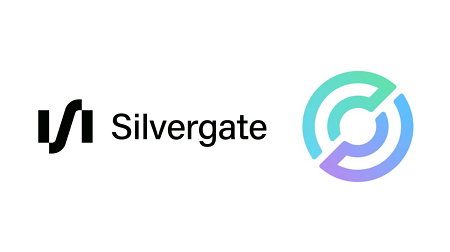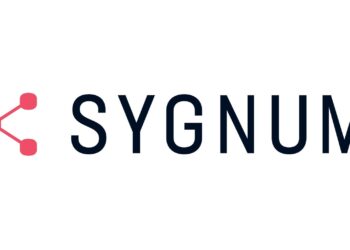Last updated on March 16th, 2023 at 02:18 pm
Questions are being asked about USDC stablecoin issuer, Circle‘s exposure to failed U.S. banks, Silvergate Bank and Silicon Valley Bank. This is because Circle published a USDC Reserve Report last week accompanied by an Attestation by the global Audit firm, Deloitte.
That Report confirmed that Circle held cash with several banks including Silvergate Bank and Silicon Valley Bank both of which have now failed. It is not clear yet how much of Circle’s cash was held at these two banks. It should be noted that Circle also holds cash with Bank of New York Mellon and others.
On March 2, 2023, Circle published Deloitte’s “Independent Accountants’ Report” setting out the assets that are backing USDC. It’s easier to think of this as a Circle Proof-of-Reserves (PoRs) release, however, done with traditional audit methods rather than Merkle trees, which is what some crypto companies, such as Binance and KuCoin, have utlized for PoRs.
These “monthly” attestations, are intended to provide verifiable assurance that the amount of stablecoin reserves are greater than the amount in circulation each month, according to standards set out by the American Institute of Certified Public Accountants (AICPA).
If the attestation reports that the stablecoin reserves are greater than the circulating amount, this implies that stablecoin is backed by liquid assets on a 1:1 basis and therefore would not be vulnerable to de-pegging from its fiat peg (which is the US Dollar in the case of USDC).
Circle, like many other crypto companies in the aftermath of FTX’s dramatic implosion, committed to periodic release of public attestations such as this to show transparency and improve customer trust. However, it is worth noting that this attestation is the first to be released since the start of the year.
The report is an internal financial audit conducted to validate Circle’s assertion that the fair value of assets held in USDC reserves is equal to or greater than USDC in circulation in accordance with the already established criteria defined in the accompanying USDC Reserve Report as of January 17, 2023, and January 31, 2023, at 11:59 pm Pacific Standard Time.
Deloitte’s independent audit validated Circle’s assertion that the Fair Value of Assets Held in USDC Reserve is equal to or greater than USDC In Circulation as of the Report Dates (January 17 and 31, 2023).
A Breakdown of USDC Reserve Assets As of January 17, 2023
The image below portrays Circle’s USDC Reserve report, which reports US Treasury Securities in accordance with Rule 2a-7 under the Investment Company Act of 1940.

USDC stablecoins in circulation as of January 17, 2023, were 43 480, 317, 534, and 42,288,053,870 as of January 31, 2023. The Fair Value of Assets held in USDC Reserve as of January 17 was $ 43,527,811,961 and 42,335,734,074 as of January 31, 2023.
Also included in the report were Circle’s reserve fund assets. As of January 17, 2023, Circle’s reserve fund assets totalled $43,527,811,961. Making up this total figure is:
- $33,990,667,299 in US Treasury Securities,
- $53,095,413 in cash held at US-regulated financial institutions, and
- $381,578,916 in cash due to or owed by Circle Reserve Fund due to timing and settlement differences.
Other USDC Reserve assets that comprised the grand total include:
- Cash held at US-regulated financial institutions amounting to $9,884,188,550.
- Cash due to/(owed by) the company due to timing and settlement differences (net) totalling $18,560,385
Making the total other USDC Reserve Assets sum up to $9,865,628,165.
A Breakdown of USDC Reserve Assets As Of January 31, 2023

Circle’s reserve fund assets totalled $42, 335, 734, 074. This grand total is made up of:
- $33,723,644,221 in U.S. Treasury Securities
- $54,742,853 in cash held at US regulated financial institutions
- $116,203,278 in cash due to/(owed by) Circle Reserve Fund due to timing and settlement differences
Other USDC Reserve assets that comprised the grand total include:
- $8,700,672,117 in Cash held at U.S. regulated financial institutions
- $27,121,839 in cash due to/(owed by) the Company due to timing and settlement differences
The report is standard and raised no red flags, except for the mention of two US-regulated financial institutions where Circle held assets: Silicon Valley Bank and Silvergate Bank. Both banks have recently faced crises that directly affect customer assets held in their custody.
Circle X Silvergate Bank
On March 8, Silvergate Capital Corporation, the parent company of Silvergate Bank, announced its decision to shut down the bank’s operations due to “recent industry and regulatory developments”. As part of the Silvergate Bank liquidation plan, the company has promised full repayment of all deposits to its clients.
On March 3rd, Circle announced via a tweet that it was winding down “certain services” with the now failed crypto-friendly bank and was in the process of notifying customers. The stablecoin issuer however noted that the severance didn’t affect any services.
Following an investigation into Silvergate’s alleged involvement in the collapse of FTX, several other crypto firms, including Coinbase, Paxos, Gemini, BitStamp, and Galaxy Digital, declared this month that they would sever ties with the bank.
1/ We maintain relationships with several banking partners. We are sensitive to the concerns around Silvergate and are in the process of unwinding certain services with them and notifying customers. Otherwise, all Circle services, including USDC are operating as normal.
— Circle (@circle) March 2, 2023
Circle X Silicon Valley Bank
Like things couldn’t get any worse, Silicon Valley Bank (SVB), another name in the list of US regulated financial institutions that held assets belonging to Circle, was shut down on March 10, 2023 by California state financial regulators.
Silicon Valley Bank collapsed Friday morning, capping off a stunning 48 hours in which a bank run and a capital crisis resulted in the second-largest failure of a financial institution in US history.
The bank had announced on March 8 that it was seeking more than $2 billion in additional capital after incurring a $1.8 billion loss on asset sales. SVB had shifted its focus to a possible sale after all efforts to raise capital had failed. The sale, however, was complicated by a rapid outflow of deposits.
California regulators shut down the bank, which was known for its extensive dealings with technology firms, and placed it under the control of the US Federal Deposit Insurance Corporation. The US FDIC (Federal Deposit Insurance Corporation) is acting as receiver, which typically means that it will liquidate the bank’s assets to repay its customers, including depositors and creditors. The FDIC’s involvement may come as a relief to Circle, as this implies that its assets (estimated at $3 billion) with SVB would likely be recovered.
If you would like to read more news articles like this, visit DeFi Planet and follow us on Twitter, LinkedIn, Facebook, Instagram and CoinMarketCap Community.
“Take control of your crypto portfolio with MARKETS PRO, DeFi Planet’s suite of analytics tools.”





















